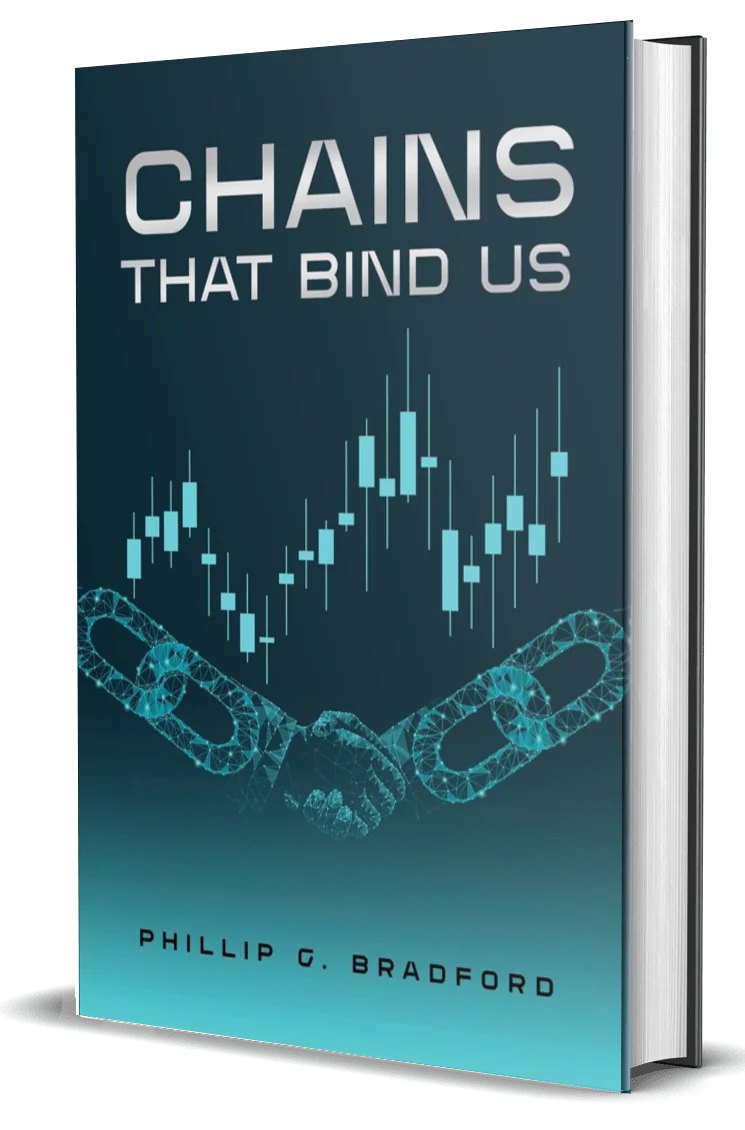Monetary policy has long been the domain of governments and central banks. These institutions set interest rates, manage inflation, and aim to control the supply of money to keep economies stable. But in recent years, a powerful new technology has emerged: blockchain. And with it, cryptocurrencies like Bitcoin and Ethereum are forcing us to rethink how monetary policy might evolve in a decentralized world.
In Chains That Bind Us, Phillip G. Bradford offers a highly accessible introduction to how blockchain changes the rules of engagement when it comes to managing economies. The book doesn’t just explain how blockchains work — it teaches readers to think differently about trust, control, and transparency in the monetary system.

What Is Monetary Policy?
Traditionally, monetary policy refers to how central banks (like the U.S. Federal Reserve) influence a nation’s economy. Their tools include:
- Adjusting interest rates to influence borrowing and spending.
- Quantitative easing (injecting money into the economy).
- Regulating reserve requirements for banks.
These tools rely on centralized control. But blockchain-based currencies don’t have a central authority. So how can they support an economy?
Decentralization as a Monetary Model
Bradford explains that Bitcoin, for example, uses a fixed supply model — only 21 million Bitcoins will ever exist. That’s a stark contrast to fiat currencies, which governments can print at will. This introduces a monetary policy based on code, not discretion. In this world, algorithms define the rules, and anyone can audit them.
For students, this is a foundational shift. Rather than trusting institutions, people place their trust in the code that runs a blockchain. The policy is transparent, automatic, and resistant to manipulation — but not without its downsides.
Tradeoffs and Teaching Moments
Bradford’s book walks readers through the tradeoffs. Fixed supply limits inflation but can lead to deflationary spirals. Volatility is higher in crypto markets, and without a lender of last resort (like a central bank), crises can be brutal.
However, blockchain also offers something new: programmable money. With smart contracts and decentralized finance (DeFi), new tools for economic coordination are emerging. Students are introduced to these concepts in Chains That Bind Us not as abstract theories, but as real systems they can interact with and build upon.
Final Thoughts: The Future of Monetary Learning
For beginners, understanding monetary theory through a blockchain lens isn’t just a novel approach — it’s essential. As digital economies grow, tomorrow’s economists, developers, and policymakers will need to know how decentralized systems affect everything from inflation to unemployment.
Chains That Bind Us acts as both a primer and a challenge: to question the systems we’ve inherited, and to imagine better ones built with transparency, trust, and shared knowledge.
